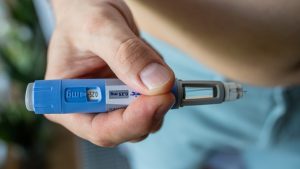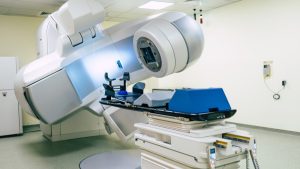Articles / When to recommend radiotherapy for non-melanoma skin cancers

0 hours
These are activities that expand general practice knowledge, skills and attitudes, related to your scope of practice.
0 hours
These are activities that require reflection on feedback about your work.
0 hours
These are activities that use your work data to ensure quality results.
These are activities that expand general practice knowledge, skills and attitudes, related to your scope of practice.
These are activities that require reflection on feedback about your work.
These are activities that use your work data to ensure quality results.
It’s not ‘black magic’ anymore.
NMSCs are the most common cancers in Australia. There are two main types: basal cell carcinoma (BCC), which represent around 70% of cases, and squamous cell carcinoma (SCC), which make up the remaining 30%. The most common cause is exposure to ultraviolet sunlight, so they often occur on the head and neck.
BCC incidence is increasing as the world’s population ages. While surgical treatment is rarely fatal, excisions performed on the lower eyelid, parts of the ear or nose can be technically difficult or cause functional or cosmetic issues for the patient.
“Topical therapies are very appropriate treatment for many thin BCCs but for thicker lesions it is important to discuss the options with patients,” says Associate Professor Dion Forstner, a radiation oncologist at St Vincent’s Clinic in Sydney
“These options include standard excision, Mohs surgery and radiotherapy, with each having their specific advantages and disadvantages based on tumour and patient factors. In some patients, it is very reasonable to tell them Mohs surgery is necessary and the gold standard but for many it isn’t necessary and can be difficult to access and expensive.”
Associate Professor Dion Forstner will be giving a talk on radiotherapy for NMSC at Healthed’s webcast on 13 September – Register here.
Facial BCCs are prime candidates for radiotherapy, says Professor Forstner, but GPs are often reluctant to recommend radiotherapy.
He says this is due partly to a lack of rigorous, randomised trials using modern radiotherapy techniques and a lack of awareness of modern radiotherapy, which is not well taught in universities.
Most existing evidence relies on observational studies or older, less effective radiotherapy techniques, he says. While shallow tumours are still often treated with superficial radiotherapy, the application of this treatment has dramatically improved.
“Although superficial radiotherapy hasn’t changed, what has improved is our use of higher energy beams – both photon and electron beams,” he says. “We can now shape the beam well on curved surfaces. We have better hardware and software these days. We can be reasonably certain what we are seeing on the computer is what is happening with the patient, whereas there used to be a bit of black magic.”
Research often conflates older techniques with modern ones when determining the efficacy of radiotherapy, not accounting for incremental technology improvements, says Professor Forstner.
Linear accelerators now deliver a more conformal radiation dose to the target and lower dose to surrounding tissue by rotating around the patient, says Professor Forstner. This allows radiation doses to be applied when necessary to large or small, curved surfaces like the scalp, nose, or periorbital areas with less toxicity to adjacent normal tissues.
Whether to pursue surgery or radiotherapy is dependent on a variety of factors, including availability, comorbidity, and type of cancer, he says.
“The choice should always come down to patient education and preference,” he says.
Associate Professor Dion Forstner will be giving a talk on radiotherapy for NMSC at Healthed’s webcast on 13 September – Register here.

Menopausal Hormone Therapy - What Dose of Estrogen is Best?

Cardiovascular Benefits of GLP1s – New Evidence

Oral Contraceptive Pill in Teens

RSV and the Heart


Modified but kept in place
Eliminated entirely without replacement
Maintained as is
Completely replaced with an alternative system
Listen to expert interviews.
Click to open in a new tab
Browse the latest articles from Healthed.
Once you confirm you’ve read this article you can complete a Patient Case Review to earn 0.5 hours CPD in the Reviewing Performance (RP) category.
Select ‘Confirm & learn‘ when you have read this article in its entirety and you will be taken to begin your Patient Case Review.
Menopause and MHT
Multiple sclerosis vs antibody disease
Using SGLT2 to reduce cardiovascular death in T2D
Peripheral arterial disease
